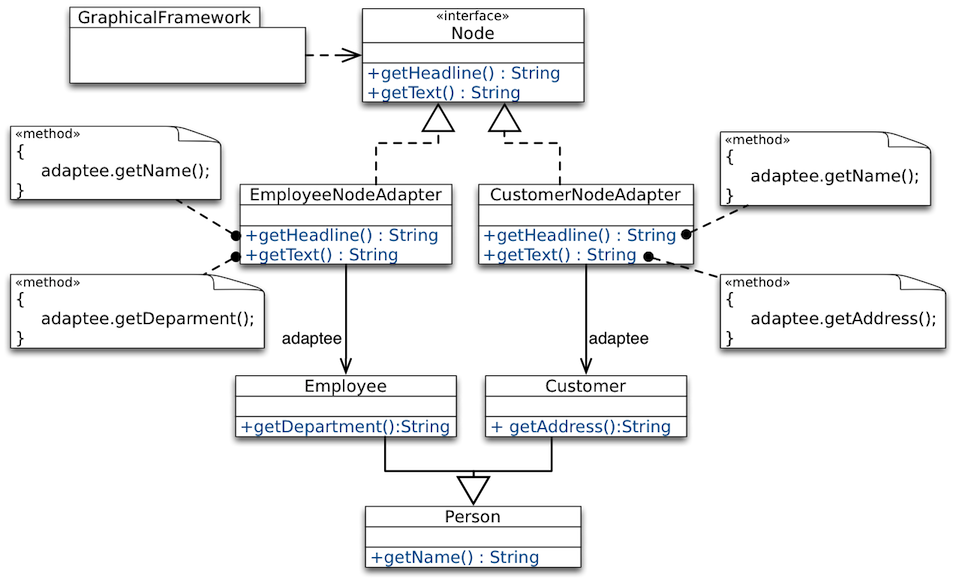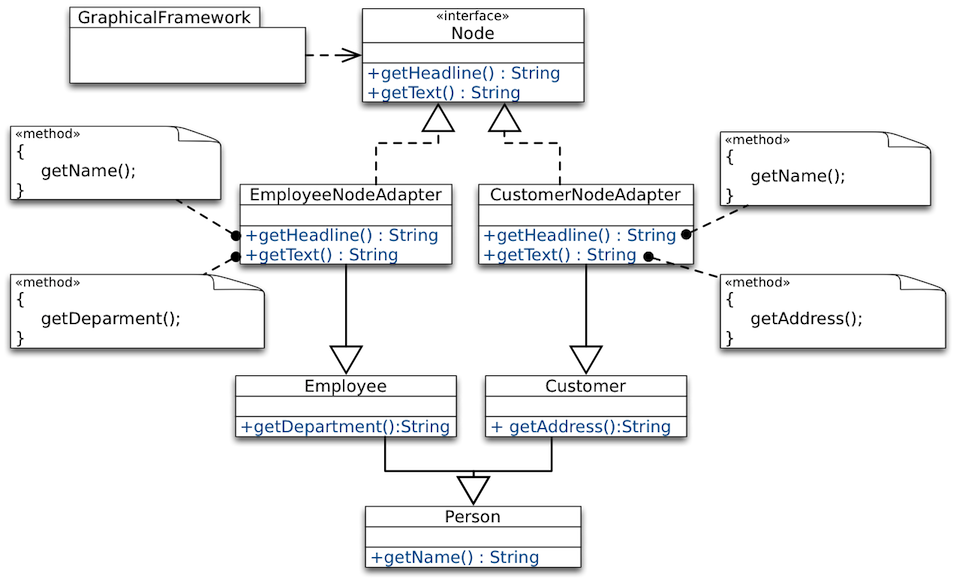Adapter Design Pattern
Intent
We want to reuse existing frameworks or libraries in our software, even if they do not match with our design.
We do not want to change our design to adhere to the structure of the reused components.
Case Study
We have acquired the framework GraphicalFramework.
GraphicalFramework provides the interface Node to draw rectangles with a headline and text to the screen.
Drawing is done by the framework, we just need to provide the data via the interface Node.
Our own design represents different kinds of persons. We want to draw our data to the screen:
- Name and department of
Employee. - Name and address of
Customer.
We will create adapters to use the functionality of GraphicalFramework for our classes.
We have to adapt Employee and Customer to fit with Node.
Two Kinds of Adapters
Object Adapter
Adapteeis wrapped byAdapterto fit in the interface ofTarget.Adapterforwards calls ofClienttorequest()to the specific methods ofAdaptee(e.g,specificRequest()).
Advantages:
Adapterworks withAdapteeand any subclass of it.Adaptercan add functionality toAdapteeand its subclasses.
Disadvantages:
- Cannot override methods in
Adaptee. - Cannot reuse
Adapterwith subclasses ofTarget. AdapterandAdapteeare different objects.
(Need to maintain relation betweenAdapteeand hisAdapter)
Class Adapter
Instead of having Adaptee as an attribute, Adapter inherits from Adaptee.
Advantages:
- Behavior of
Adapteecan be overridden. - Adapter and
Adapteeare the same object, no forwarding.
Disadvantages:
Adaptercannot be used with subclasses ofAdapteeorTarget.Multipleinheritance may be required.
In Java: At least one ofTargetandAdapteemust be an Interface.
Takeaway
Pimp My Library (Scala)
Example Scenario
We want to be able to repeat a certain operation multiple times and want to store the result in some given mutable store.
But, Scala's (2.10) mutable collections do not define a common method to add an element to them.
In the following we develop a generalization of the previously shown repeat method. This variant enables the developer to specify the target data store.
The previous solution has two issues:
- The
repeatAndStoremethod requires aMutableCollectionwhich is basically an implementation-internal type. - It returns the original collection to make the usage easier, but important type information is lost (the
HashSethas become aSet).







